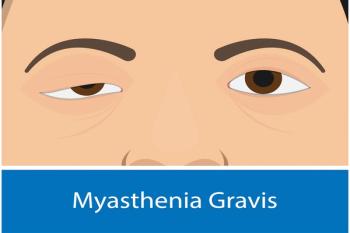
Contributor: PrEP in Practice – How to Start Conversations About HIV Prevention
Learning the best type of HIV prevention for those at highest risk can start with conversations about their options, writes Zandraetta Tims-Cook, MD, MPH, AAHIVS
In the US, we have made remarkable strides against HIV and AIDS. Antiretroviral therapy has transformed HIV from a fatal diagnosis into a manageable chronic condition, and pre-exposure prophylaxis (PrEP) is an effective tool for helping to prevent new cases. Yet, our work is far from finished.
My passion for this work began long before I entered the exam room. It started during my medical training at Cornell University in the early 2000s, where I was first confronted with the sobering statistic that in the US, HIV and AIDS disproportionately impacted young Black women like me.1 This was a time when effective treatments were available, but arguably, so many women were left behind due to undiagnosed or untreated HIV.This disparity wasn't just a statistic; it was a personal call to action and inspired my decision to dedicate my career to HIV prevention and care.
Making HIV Prevention Conversations More Routine: Start Where You Are
Today, the CDC recommends that health care providers inform all sexually active adolescents and adults about PrEP, regardless of their race, gender, or sexual orientation, how many partners they have, or whether or not they report specific reasons for HIV prevention.2 We recently learned that the population of people who could benefit from PrEP is far greater than previously thought: the CDC now estimates that 2.2 million people in the US could benefit from it, nearly doubling its earlier estimate.3 Yet, the latest data suggest that only a small fraction of people who could benefit from PrEP actually receive a prescription for it.
This means we need to talk about PrEP and HIV prevention far more often, asking questions about sexual wellness and normalizing these conversations in our routine care. Sometimes, it’s as simple as saying, “I’d like to discuss some things that might feel personal or uncomfortable, but it’s important for your overall health.” This small step can open the door to meaningful discussions about sexually transmitted infections (STIs) and ultimately, PrEP options.
For many health care providers, initiating PrEP education can feel daunting, and they may struggle with how to broach sensitive topics like sexual health. Another common misconception is that only primary care providers or certain specialists, such as OB-GYNs or infectious disease specialists, should be leading these discussions. However, the reality is that all health care providers have a role to play in promoting HIV prevention.
Another practical approach can be integrating sexual health discussions into other testing conversations, such as routine blood tests. Then, use those initial discussions and test results — whether positive or negative — as an entry point for broader conversations.
Empowering Patients: Understanding Why Options Matter
One of the most important lessons I’ve learned over the course of my career is that offering patients options empowers them to choose the best therapy for their unique needs.
Although daily pills for PrEP had been available for some time, the FDA approval of cabotegravir (
Real-world evidence was recently presented at this year’s Conference on Retroviruses and Opportunistic Infections. This presentation adds to a growing body of real-world evidence for cabotegravir, demonstrating its similar performance in real-world settings to the HIV Prevention Trials Network (HPTN) clinical trials and reinforcing its efficacy.4 Beyond effectiveness, adherence is also key. Clinical study subsets have shown higher adherence rates with cabotegravir (91.5%) compared with a daily oral PrEP pill (74.2%). In fact, adherence to daily oral PrEP decreased from 92% to 67% during the study period.5,6
And put simply, patients often prefer an injectable option. Recent data showed that among people who have tried both daily oral and injectable PrEP, if given a choice, 83% choose the injection.7
These data reinforce what I’ve observed firsthand in my practice, where my patients’ responses to having this option are often overwhelmingly enthusiastic. For many patients, long-acting injectable PrEP administered every 2 months in a medical setting sparked a shift in how they approach and remain adherent to PrEP. The injection can also help address concerns many patients have around PrEP privacy, as patients may find that they don’t need to worry about a pill bottle in their home or in their luggage when traveling. What’s more, as their health care provider, the regular cadence of visits for the injections allows me to help my patients stay on top of their health, including regular HIV and STI testing. These frequent touchpoints also enable me to grow trust with my patients, understand their evolving needs, and ensure they receive the best possible care.
Importantly, safety and tolerability are also key when thinking about prescribing any PrEP option, and with more options available than ever before, it's important to counsel patients on all considerations, including adverse effects, such as injection site reactions, as well as potential interactions with common medications.
Every Day Brings an Opportunity to End the Epidemic
Today in the US, 3 new people still contract HIV every hour.8 I believe a significant factor that contributes to this alarming fact is that PrEP simply remains unknown to far too many people. To truly turn the tide of the HIV epidemic, we must actively promote prevention strategies with every patient.
Change begins with providers making conversations about sexual health a part of the routine medical experience. I like to approach the topic as “we are all HIV possible.” As such, conversations about prevention should be initiated with all patients, agnostic of our perceptions of a patient’s age, profession, or skin color, and ensure we are reaching those who have been historically underserved.
By integrating these conversations into our routine care, we are helping put HIV prevention within our patients’ reach and driving progress toward the ultimate goal of ending the HIV epidemic in our lifetime. This progress starts in our offices, 1 patient at a time.
*Apretude is administered every other month by a health care provider after initiation injections have been given 1 month apart for 2 consecutive months.
Author Disclosures: Dr. Tims-Cook is compensated by ViiV Healthcare
References
1. CDC. Racial/ethnic disparities in diagnoses of HIV/AIDS—33 states, 2001-205. MMWR Morb Mortal Wkly Rep. 2007;56(9):189-193.
2. Clinical guidance for PrEP. CDC. February 10, 2025. Accessed May 30, 2025.
3. Kourtis AP, Wiener J, Zhu W, et al. Estimating the population need for preexposure prophylaxis for HIV in the United States. Ann Epidemiol. 2025;106:48-54. doi:10.1016/j.annepidem.2025.04.017
4. ViiV Healthcare continues to deliver long-acting injectable HIV innovation with late-breaking data and real-world insights across pipeline and portfolio at CROI 2025. News release. ViiV Healthcare. March 9, 2025. Accessed June 11, 2025.
5. Landovitz RJ, Donnell D, Clement ME, et al. Cabotegravir for HIV Prevention in cisgender men and transgender women. N Engl J Med. 2021;385(7):595-608. doi:10.1056/NEJMoa2101016
6. Canadian Agency for Drugs and Technologies in Health. Cabotegravir (Apretude): Therapeutic area: HIV-1 infection, pre-exposure prophylaxis: Reimbursement Review. Canadian Agency for Drugs and Technologies in Health; 2025. Accessed June 11, 2025.
7. Grinsztejn B, Hoagland B, Coutinho C, et al. ImPrEP CAB Brasil: enhancing PrEP coverage with CAB LA in young key populations. Presented at: Conference on Retroviruses and Opportunistic Infections 2025; March 9-12, 2025; San Francisco, CA.
8. HIV declines among young people and drives overall decrease in HIV infections. News release. CDC. May 23, 2023. Accessed June 11, 2025.
Newsletter
Stay ahead of policy, cost, and value—subscribe to AJMC for expert insights at the intersection of clinical care and health economics.













































